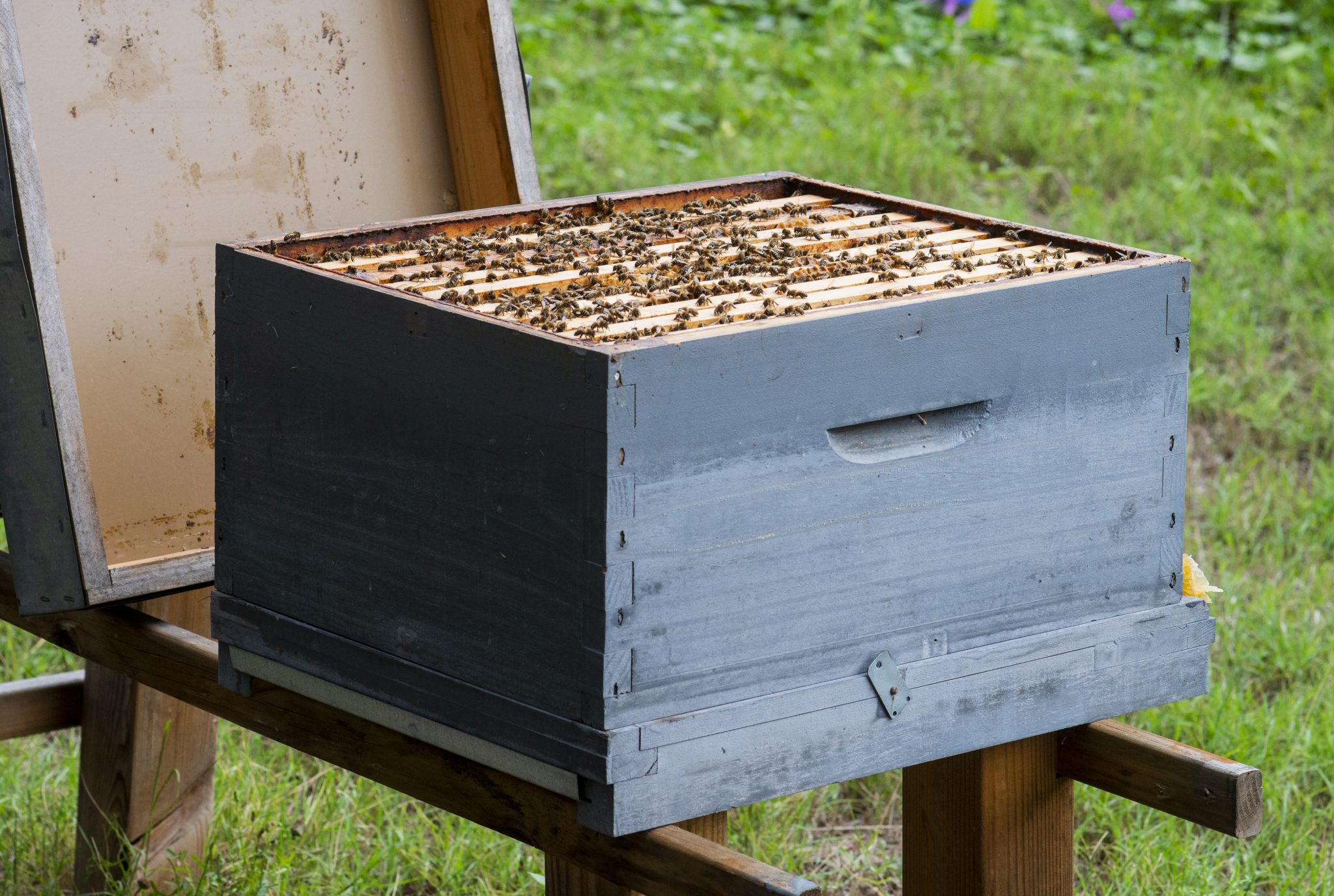Urban Extension

When people think about honeybees and beekeepers, they usually think of a country setting with lots of land and few people. However, that’s not the case today. Just as with gardening and the movement to grow your own food, beekeeping has moved into the big cities. Take a few minutes to check out the flowering plants near you. If you see honeybees on flowers in your neighborhood, then you may have a beekeeper in your area.
Getting Started
Keeping honeybees in a town or city is possible. Beekeeping can be done whether you live in a suburb with a small backyard or near an inner-city lot. If you want to take up beekeeping as a hobby, the first step is to check with your town and your homeowner’s association (HOA) to confirm whether hives are allowed. Next, talk to your neighbors and see if anyone has severe allergies to bee stings. Ask them if they would be comfortable with a hive close to their home. Your city, HOA, and neighbors must be onboard with your plans to add hives before you begin.
If you are beekeeping in a city, plan to keep it small. Adding two to three hives to your landscape will hardly produce a noticeable bee population difference in your neighborhood. This is because honeybees travel up to two to three miles to find food sources. Adding more than three hives will create a noticeable population difference and may make neighbors uncomfortable.
Inspecting Beehives
Each hive may have from 40,000 to 60,000 bees in the peak summer season. These bees will be busy coming and going all day long, so they need plenty of room in front of their hives to create a flight path. An apiary with two hives will need a space about 10 feet by 20 feet. Place the hives so that the flight pattern will direct them away from your neighbor’s home and any areas where people congregate. For example, place them so the entrance is facing away from play equipment and patios.
Your bees will be most noticeable when you are inspecting the hives. This involves suiting up from head to toe and opening the hive to look inside each hive box to make sure the colony is healthy and growing. Healthy hives have one to two hive boxes filled with brood or immature bees and an additional box where they are actively storing honey. When inspecting, the bees get a bit agitated and are more likely to land on or sting people close by. It will take an hour or two for your bees to settle back down after an inspection. Therefore, inspection times should be chosen with your neighbors in mind. Only inspect hives on days when children and neighbors are not outside. Schedule your hive inspections for weekdays when kids and parents are at school and work.
Insecticide Use
Make sure to communicate with your neighbors about pesticide usage too. Since your bees will be visiting their flowers, it is good to know when and what types of insecticides are used. Ask them to let you know when they plan to spray. Ask neighbors to skip spraying plants that are in full bloom and to spray their insecticides in the evening around sundown. Most bees will be back in the hive by then. Ask neighbors to try to use contact insecticides and those that are specific to the pest they have instead of using broad spectrum sprays. Insecticide labels always contain information about their toxicity to honeybees.
Big City Beekeeping
Once your neighbors and HOA are on board, beekeeping in the city is quite possible. Limit your apiary size and schedule inspection times around your neighbors’ schedules. Each hive will produce about 40 pounds of honey each year. Consider thanking your neighbors with a jar of honey. You and your bees will become the new neighborhood favorites.
Visit Alabama Extension’s website at www.aces.edu for more beekeeping information.

